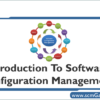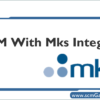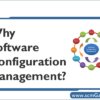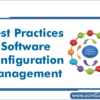Complete Octopus Deploy Certification Guide & tutorials
What is Octopus Deploy? Octopus Deploy is an automated deployment tool which can integrate with most code build process for application deployment and configuration. It makes release management easy, auditable,…
Read more »Next Generation Software Configuration Management with Subversion
Next Generation Software Configuration Management with Subversion Next Generation Software Configuration Management with Subversion
Read more »Build and Release Training online
Upcoming Training Dates | Training Agenda | Training Calender | FAQ | Why scmGalaxy Online Training Training Duration – 30 Days (90 mins each day) Mode – Online (Webex | Skype | Gotomeeting) Email – Mode of Payment –…
Read more »Questionnaire: Access your SCM Process in Project
TABLE OF CONTENTS 1…… General Assessment Questions. 2 1.1 Questions to analyze the development process description.. 2 1.2 Questions to characterize the project application.. 2 1.3 Questions to identify the supporting tools. 2 2…… Assessment on Configuration and Change…
Read more »The Four Basic Requirements for an SCM
Identification, control, audit, and status accounting are the four basic requirements for a software configuration management system. These requirements must be satisfied regardless of the amount of automation within the…
Read more »The minimum features for SCM tools
SCM Tools The minimum features for SCM tools are closely related to the task of handling the different product deliverables produced within the project software engineering process. Tool requirements and…
Read more »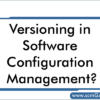
Versioning in Software Configuration Management | SCM Versioning Guide
Versioning in Software Configuration Management? Reference: This article has been take out from Book Called “The Build Master: Microsoft’s Software Configuration Management Best Practices” Why Worry About Versioning? Having a…
Read more »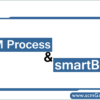
SCM Process and smartBuild Overview, What is SCM Process and smartBuild?
SCM Process and smartBuild SCM Process and smartBuild from Rajesh Kumar
Read more »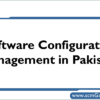
Software Configuration Management in Pakistan | SCM Practices in Pakistan
Mature CM is cross-business functionality NOT functionality solely within engineering. Software Configuration Management facilitates timely communications; enforces development policies and technical standards along Management of Hand-offs between Environments and Teams…
Read more »
Know About scmGalaxy – Introduction
scmGalaxy is a community initiatives based on Software configuration management that helps community members to optimize their software development process, Software Development Life Cycle optimization, Agile Methodologies and improve productivity…
Read more »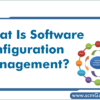
What Is Software Configuration Management, its importance & how to implement it?
Software engineers usually find coding to be the most satisfying aspect of their job. This is easy to understand because programming is a challenging, creative activity requiring extensive technical skills. It can mean getting to “play” with state-of-the-art tools, and it provides almost instant gratification in the form of immediate feedback. Programming is the development task that most readily comes to mind when the profession of software engineering is mentioned.
That said, seasoned engineers and project managers realize that programmers are part of a larger team. All of the integral tasks, such as quality assurance and verification and validation, are behind-the-scenes activities necessary to turn standalone software into a useful and usable commodity. Software configuration management (SCM) falls into this category—it can’t achieve star status, like the latest “killer app,” but it is essential to project success. The smart software project manager highly values the individuals and tools that provide this service.
This chapter will answer the following questions about software configuration management.
Read more »

The Four Basic Requirements for SCM Process – SCM Guide
Identification, control, audit, and status accounting are the four basic requirements for a software configuration management system. These requirements must be satisfied regardless of the amount of automation within the SCM process. All four may be satisfied by an SCM tool, a tool set, or a combination of automated and manual procedures.
- Identification—Each software part is labeled so that it can be identified. Furthermore, there will be different versions of the software parts as they evolve over time, so a version or revision number will be associated with the part. The key is to be able to identify any and all artifacts that compose a released configuration item. Think of this as a bill of materials for all the components in your automobile. When the manufacturer realizes that there has been a problem with parking brakes purchased from a subcontractor, it needs to know all the automobile models using that version of the parking brake. It is the same with software. If we are building a multimedia system that has audio MPEG3 drivers for Windows 98, Windows 2000, Windows CE, Linux, and FreeBSD operating systems, how do we find out which releases are impacted when we find an error in the Linux product? You must go back to your SCM system to identify all the common components in all operating system releases that are impacted.
Read more »
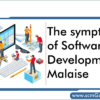
The symptoms of our software development malaise
Software development has traditionally suffered from producing end products with a definite lack of inherent quality. The symptoms of this quality lack are listed here:
- Software development projects are often delivered late and over budget.
- Often the delivered product does not meet customer requirements and is never used.
- Software products simply do not work right.
As we look into the symptoms of our software development malaise, five principal issues related to software development arise.
Lack of Visibility
Software is conceptual in nature. Unlike a bridge, a building, or another physical structure, it is not easy to look at software and assess how close it is to completion. Without strong project management, “software is 90% complete 90% of the time.” Through the adoption of SCM policy and the definition of the configuration management model of the software under development, all CIs, components, and subcomponents are immediately visible for versions, releases, and product families.
Read more »
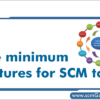
What are the minimum features for SCM tools? – SCM Tools Essential Features
SCM Tools
The minimum features for SCM tools are closely related to the task of handling the different product deliverables produced within the project software engineering process. Tool requirements and selection criteria are based on a series of features that provide a consistent look and feel with state-of-the-art software development environments. An SCM tool must have multiuser support, an intuitive graphical user interface, conformity to the organization’s development environment, scalability, flexibility in integrating other software development tools, ease of setup, modifiable models, process management, extensive support for the development phase, and management of nondevelopment objects.
Basic selection criteria includes the following:
Read more »
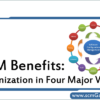
SCM Benefits the Organization in Four Major Ways – SCM Process Benefits
SCM benefits an organization in four areas: control, management, cost savings, and quality. These four benefits are mapped to an organization’s overall goals and objectives when the decisions are made to bring a SCM tool in-house. The features of a SCM tool further support these benefits.
SCM Benefits the Organization in Four Major Ways
Control
Control in SCM provides the ability to review, approve, and incorporate changes into a configuration item. There must be one controlling SCM tool so that there is only one set of training, license management, installation, and user procedures. All project personnel use the tool. Inherent in the tool is a standardized, measurable process for change. Integrity maintenance of CIs is enforced throughout the product life cycle. The tool permits only controlled change to the baseline CIs, and all changes are tracked.
Read more »
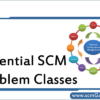
Potential SCM Problem Classes | SCM Potential considerations in an organization
When planning for SCM in your product development organization, you must first understand the classes of potential problems that can exist. Once the classes are understood, the inherent problems that are causing configuration management issues may be easily identified.
Potential SCM Problem Classes
- Multiple developer syndrome—When you have a project that requires more than one developer, there is the problem with multiple people working on one product base. This could be a test plan, requirements specification, or code. Effort is wasted when two or more people work on the same file and then save it. Without SCM control, the last person to save the file has those changes saved. All the other changes are lost. The simplistic method of locking a file while one person reads it prevents others from simultaneously working on the file.
- Multiple releases—Enhancements to the base product should result in additional releases of the product containing the latest changes. Once the second release is available, some users are on an earlier release. Having an SCM makes managing those releases possible. When bugs are reported, changes must be made across all impacted releases. As new features become available in the product, they must be made available to all current users, no matter what the release date.
Read more »
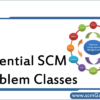
What are the potential SCM problem Classes in the process?
When planning for SCM in your product development organization, you must first understand the classes of potential problems that can exist. Once the classes are understood, the inherent problems that…
Read more »
